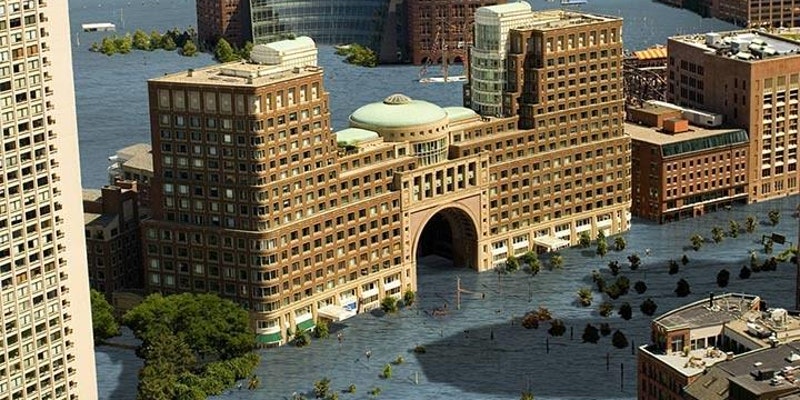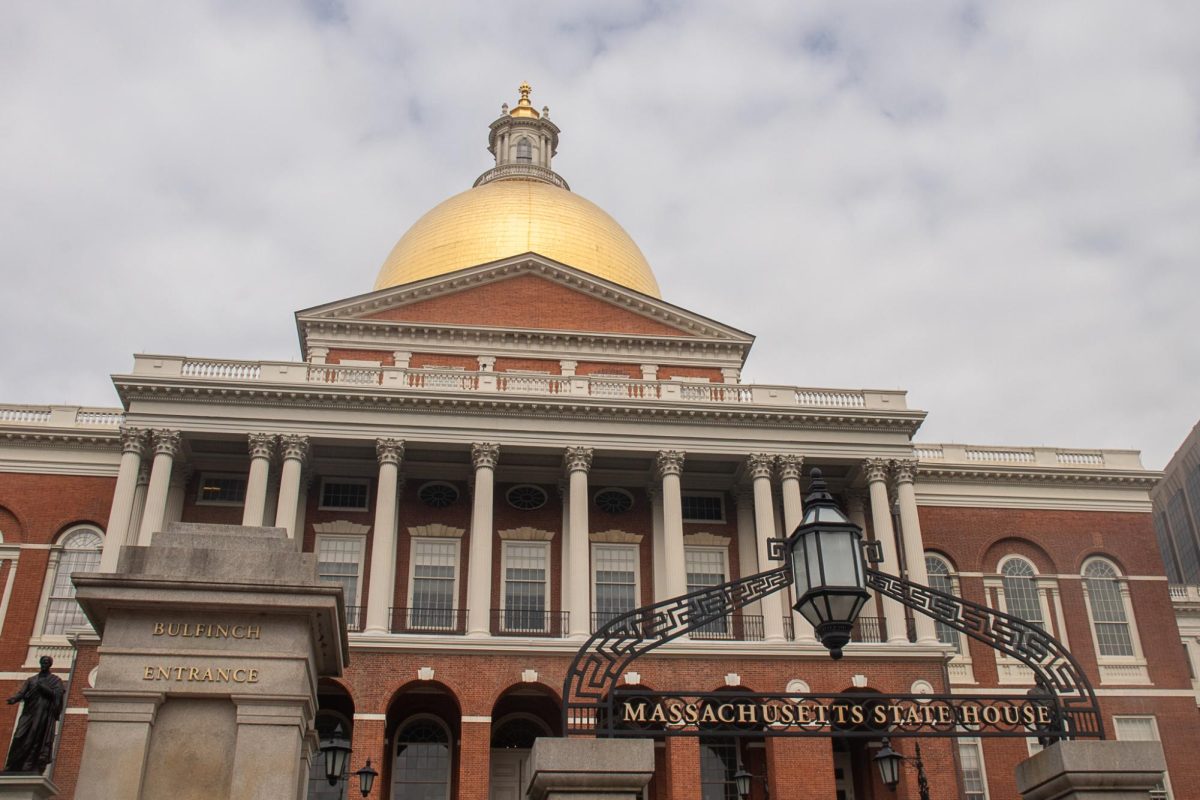Several of Boston’s leading groups on sea level rise and harbor disaster relief have reached a very similar conclusion: due to climate change, the city faces a rise in sea level so great that within the next 100 years, 30 percent of the city could be underwater.
William Golden, the lead speaker, opened the discussion of this real disaster scenario at an event Wednesday, and said planning for the city’s future has transformed from a purely preventative nature, to attempts to identify how Boston can best survive from the inevitable flooding.
He and other experts in real estate, city infrastructure and the stewardship organization, Boston Harbor Now, came together to each provide a unique and troubling insight on what the city of Boston will need to prepare. The panel was presented by the Greater Boston Real Estate Board and Suffolk University’s Center for Real Estate. Panelists discussed the projects that many of their groups are working toward, and what more is still to come.
Golden, who co-founded and directs the National Institute for Coastal and Harbor Infrastructure, offered a wide view of what he calls the “triple threat” posed to Massachusetts and the rest of the country.
This combination of threats consists of rising sea levels, extreme storms and aging infrastructure. Golden continued that to resolve this danger, “We now have to change from responding and repairing, to planning and investing.”
Four possible basic solutions were laid out by Golden in response to the rising sea level; to retreat, to buy time, to live with the water or to ignore the threat.

Highly conscious that none of these were ideal, Golden asserted that the reason some people do not admit to the existence of climate change is because they don’t want to admit to what the solution will have to be. The solution will have to involve large amounts of funding and require intense planning efforts.
The Massachusetts Department of Transportation’s (MassDOT) Assistant Secretary for Policy Coordination Kate Fichter spoke from the perspective of what the Boston area public transportation systems face in opposition to climate change and sea level rise.
“If the [MBTA] Blue Line goes down, you essentially cut off East Boston from the mainland,” said Fichter.
In discussing various proposals and projects that are being pushed forward within MassDOT, whether they are physical changes or changes in bureaucracy, Fichter demonstrated that due to the incoming threat of sea level rise, Boston’s subways will need to be prepared.
One of the several physical solutions would be the building of storm doors that can close off the entries to subway tunnels in the case of flooding, minimizing damage to those systems.
Bureaucratic plans included multiple staffing additions to create more room for departments to work closer together and increase efficiency in confronting issues of climate change.
Working in a newly established position by Boston Mayor Marty Walsh, Richard McGuiness explained what he has helped plan as Deputy Director of the Waterfront Planning & Development Agency.
McGuiness reflected on how the actions of the city were once highly motivated by what the Federal Emergency Management Agency said any active risks were. This meant that the city would not be able to react to threats that had not been analyzed by the government agency and thus could not respond to the far future dangers of sea level rise to the Boston area.
Now, as the city and state has become much more aware of what risks are to be faced, a new and larger push to harden the city’s infrastructure against flooding has begun.
“Retrofitting wharf style buildings by eliminating the second floor and elevating the first floor is a good example of how you can protect those wharf style buildings which are part of Boston’s fabric, it’s history of architecture,” said McGuiness.
McGuiness emphasized that many of Boston’s future plans will focus less on reducing carbon emissions to stop climate change from happening, rather focusing on the city reducing carbon emissions so that when those negative effects do arrive, they will not become any worse than what is predicted. The public and the private sector reflected in the talk how much time and money is being spent on developing methods to prepare all of the city’s infrastructure and neighborhoods from being destroyed in the floods to come.
On a more intimate level of dealing with the problem, WS Development Vice President for the Boston Seaport Yanni Tsipis spoke on how they take into account that these new guidelines and research plans when working on their new 23-acre project in Boston’s seaport district.
Describing what the three developments are being built at the South Boston Waterfront Seaport are, Tsipis listed buildings, transportation infrastructure, and ten acres of public space.
Tsipis’s experience has spanned more than $2 billion of development projects in Boston, throughout many different areas of development. His discussion reflected on how he has to consider what will happen in the next half-century to affect his developments in regards to rising sea levels.
Some of the newly developed standards include putting very little of a building’s priority maintenance equipment on the first few floors and keeping much of a new building’s electrical and ventilation machinery on the roof.
“The science caught up with the concern really just in the last five years or so,” said Tsipis.
President and CEO of Boston Harbor Now Kathy Abbott, was the last person to speak at the event and discussed much of her past experience with city-wide infrastructure changes similar to those other speakers presented.
Considering the process of how the various Boston Harbor cleanup projects were developed and executed, Abbott insisted that the first major step to move forward in defense of sea rise will be to create new government systems to allocate funding for all of the needed developments. She continued, explaining that these developments will be numerous, as so much of the city will have to become involved in order to make a positive move to protect itself from the damage caused by climate change.
“Each time a report comes out we find out the sea is rising higher than we thought before,” said Abbott.
Abbott named many of the wide-ranging discussions that are occurring in both the public and private sectors with optimism, claiming that, “We are doing better than many other cities in terms of the level of conversation we are having and the collaboration we are having and the steps we are beginning to take.”




















